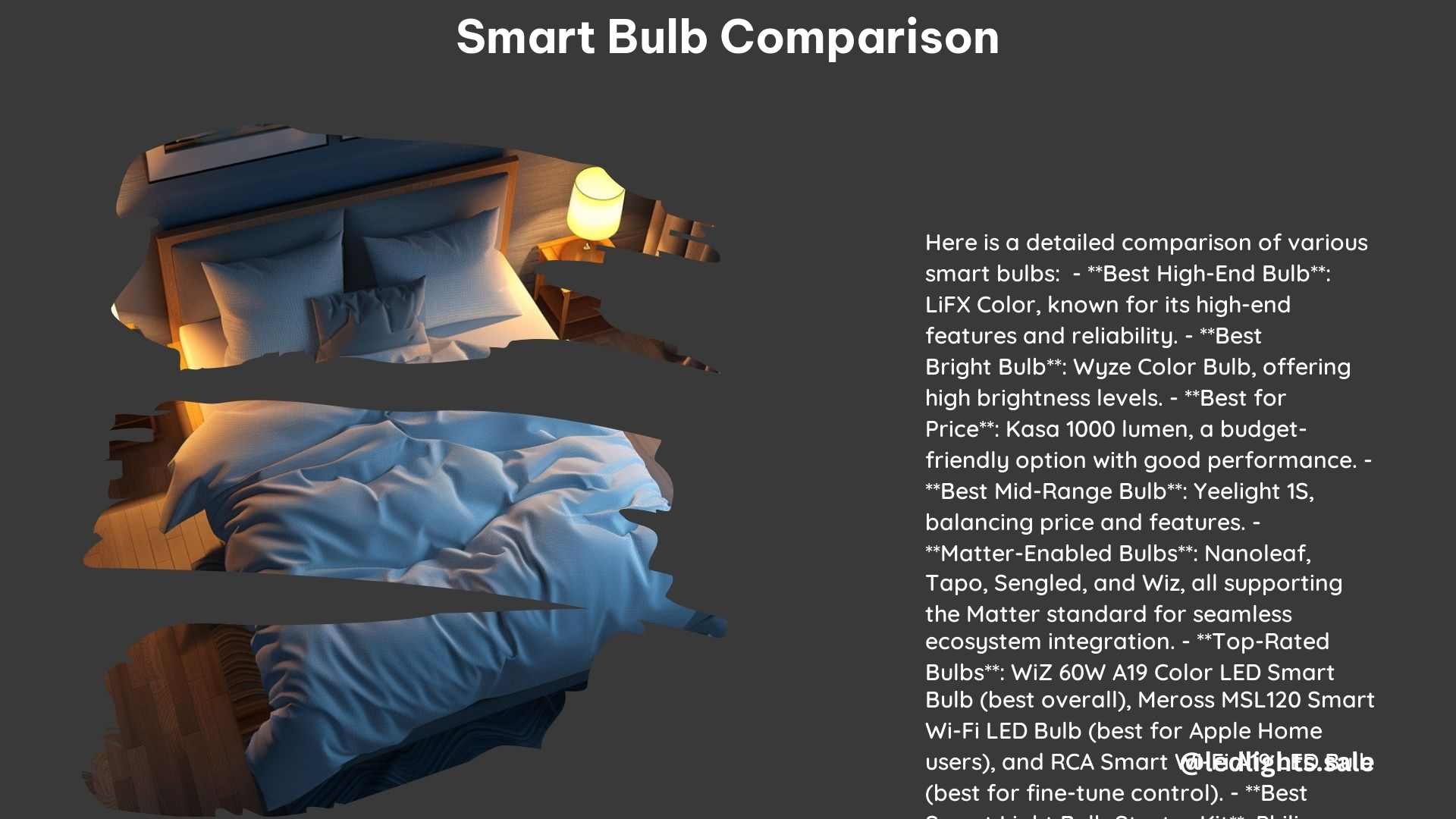Smart bulbs have transformed the way we approach home lighting, offering a wide range of advanced features that cater to our evolving needs. From color-changing capabilities to voice control and scheduling, these innovative solutions have become a staple in modern households. In this comprehensive guide, we delve into the intricacies of smart bulb technology, comparing the energy efficiency and environmental impact of LED, CFL, and incandescent bulbs, as well as the pros and cons of using smart bulbs versus smart switches for home lighting control.
Energy Efficiency and Environmental Impact
LED Bulbs
- Energy Efficiency: LED bulbs are the undisputed champions of energy efficiency, using up to 90% less energy than their incandescent counterparts. According to the U.S. Department of Energy, LED bulbs can convert up to 60% of their input energy into light, compared to just 20% for incandescent bulbs.
- Environmental Impact: LED bulbs are also the eco-friendlier choice, as they are free of toxic chemicals like mercury and lead. This makes them a safer and more sustainable option for home lighting.
CFL Bulbs
- Energy Efficiency: Compact fluorescent lamps (CFLs) are significantly more energy-efficient than incandescent bulbs, using around 25-35% less energy. However, they still fall short of the impressive efficiency of LED bulbs.
- Environmental Impact: CFLs do contain a small amount of mercury, which can be harmful if not disposed of properly. This environmental concern is a key drawback of CFL technology.
Incandescent Bulbs
- Energy Efficiency: Incandescent bulbs are the least energy-efficient option, converting only about 5-10% of their input energy into light. The majority of their energy is lost as heat, making them a poor choice for energy-conscious consumers.
- Environmental Impact: Incandescent bulbs contribute to greenhouse gas emissions and have a higher carbon footprint compared to LED and CFL alternatives.
Smart Bulb Comparison

Philips Hue White Ambiance A19
- Pros:
- Excellent light quality with a wide range of color temperatures (2200K-6500K)
- Smooth and precise dimming capabilities
- Comprehensive ecosystem with a wide range of compatible devices and features
- Cons:
- Requires a dedicated hub for full functionality, which adds to the overall cost of the system
AiDot Linkind Matter Smart Light Bulb
- Pros:
- Affordable price point compared to premium smart bulb brands
- Supports multiple smart home platforms, including Alexa, Google Assistant, and HomeKit
- Offers a wide range of 16 million colors
- Cons:
- Some users have reported reliability issues with the bulbs, such as connectivity problems or premature failure
LIFX SuperColor Ceiling Light
- Pros:
- Sleek and modern design that seamlessly integrates into various home decors
- Dual light zones for enhanced lighting control and customization
- Easy installation process without the need for a dedicated hub
- Cons:
- More expensive compared to some other smart bulb options
- Some users have reported occasional reliability concerns, such as intermittent connectivity or unexpected behavior
Smart Bulbs vs. Smart Switches
Smart Bulbs
- Pros:
- Offer advanced features like color changing, scheduling, and voice control
- Can be controlled individually, allowing for personalized lighting in each room
- Cons:
- Can be more expensive, especially when replacing multiple bulbs in a home
- May have compatibility issues with certain dimmers or existing lighting fixtures
Smart Switches
- Pros:
- Provide more flexibility in many installations, as they can control multiple bulbs simultaneously
- Often more cost-effective than replacing multiple smart bulbs
- Cons:
- Require more complex installation, as they involve modifying the existing wiring and switches
- May not support advanced features like color changing or scheduling, depending on the specific model
Technical Specifications
Philips Hue White Ambiance A19
- Lumens: 800 lumens
- Color Temperature: 2200K-6500K
- Hub Required: Yes
- Compatibility: Alexa, Google Assistant, HomeKit
AiDot Linkind Matter Smart Light Bulb
- Lumens: 800 lumens
- Color Temperature: 2500K-6500K
- Hub Required: No
- Compatibility: Alexa, Google Assistant, HomeKit
LIFX SuperColor Ceiling Light
- Lumens: 1100 lumens
- Color Temperature: 2500K-9000K
- Hub Required: No
- Compatibility: Alexa, Google Assistant, HomeKit
